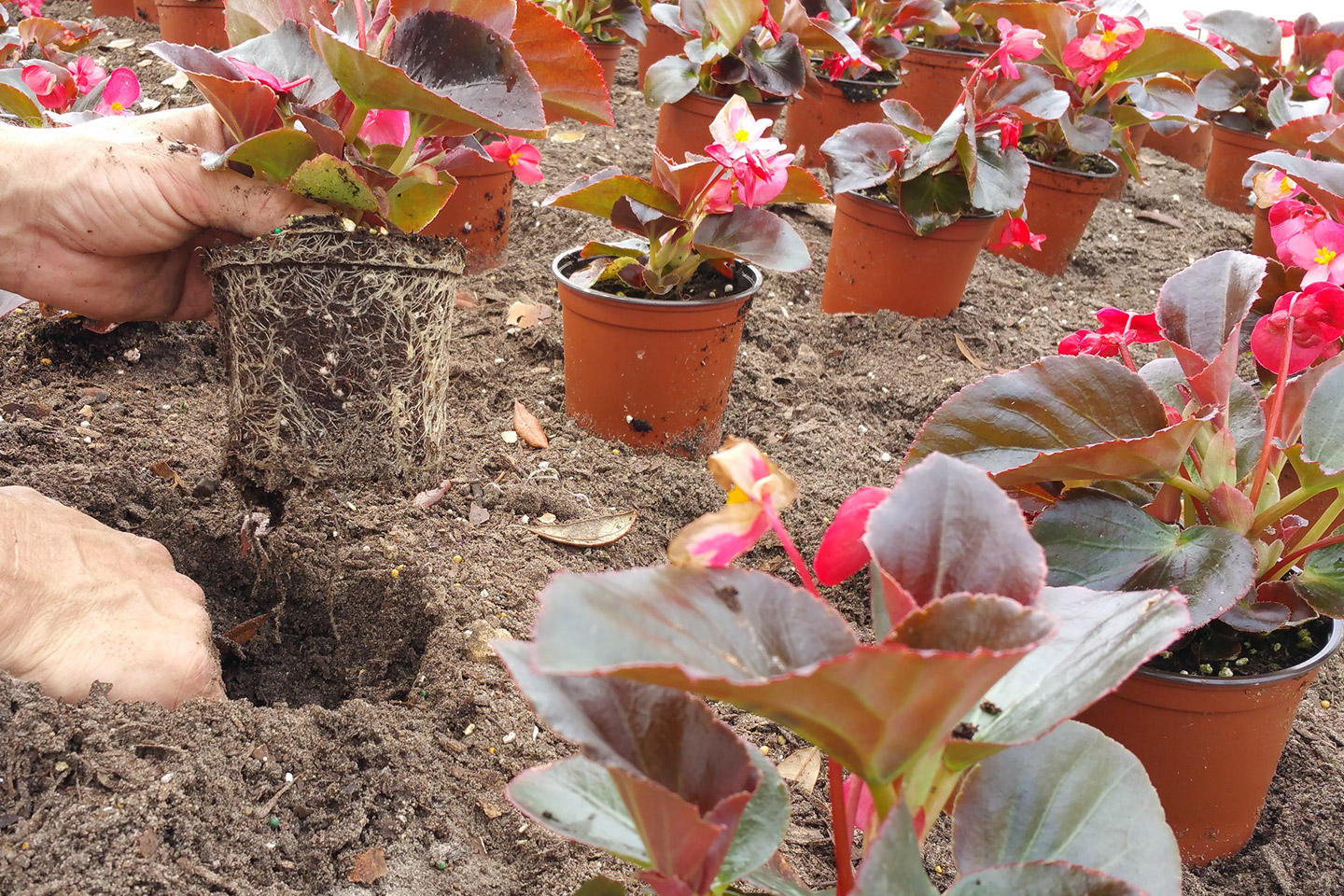Lubber Grasshoppers and Tussock Moth Damage: A Springtime Challenge in Florida - Sit Down with CEPRA
As Spring blooms across the lush landscapes of Florida, nature awakens with vibrant colors and a renewed vitality. However, amidst Springs rejuvenation, certain pests emerge, posing a threat to our landscape. Among these pests are the lubber grasshopper and tussock moth caterpillars, notorious for their destructive springtime feeding habits.
The Lubber Grasshopper
Native Eastern Lubber Grasshoppers are among the most conspicuous and destructive ornamental plant pest in Florida. These large, colorful grasshoppers are known for their distinctive appearance, characterized by their robust bodies and bright hues of yellow, orange and red. The adult males typically range around 2 inches while the adult female can get up to 3 ½ inches in length. These clumsy grasshoppers are mostly observed walking since they aren't great at leaping, but they are great climbers. While visually striking, their present in the landscape spells trouble for our ornamental plants.
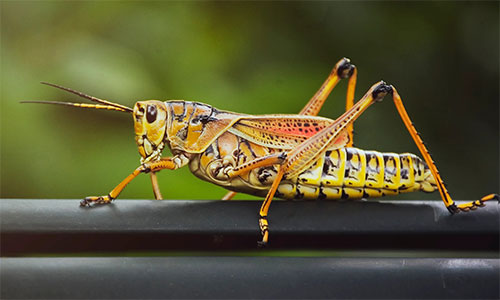
Lubber Adult
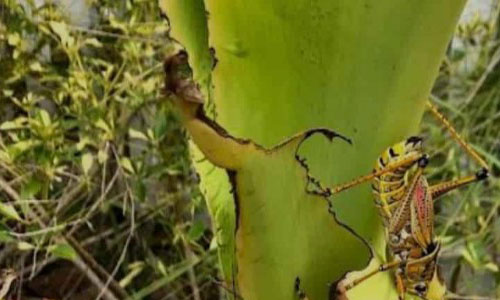
Lubber Eating Crinum Lily
There is one generation a year of these long-lived grasshoppers. During the spring, Lubber grasshoppers undergo a population surge, fueled by favorable weather conditions and abundant food sources. One of the most alarming aspects of the Lubber grasshopper infestations are their sheer numbers. They gather in large groups, known as bands, and can damage plants within a short span of time. These voracious herbivores have a broad host range of at least 100 species of plants from 38 plant families. In the landscape we frequently see them feeding on Agapanthus, Amaryllis, Crinum and Canna Lily.
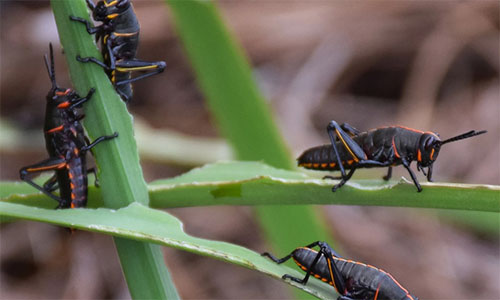
Juvenile Lubbers
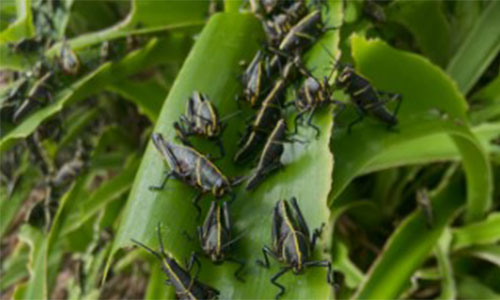
Juvenile Lubber Damage
Tussock Moths
Tussock moths are small moths that are best known because of their attractive larvae. These caterpillars plague our trees in the Florida landscape during the spring. These small yet destructive caterpillars are characterized by the tufts of hair-like structures that adorn their bodies. While adult Tussock Moths are relatively inconspicuous, it is their larval stage that causes the most damage. The fully grown larvae are 1 to 1.5 inches long. Most have dark bodies with orange spots; however, some have light colored bodies.
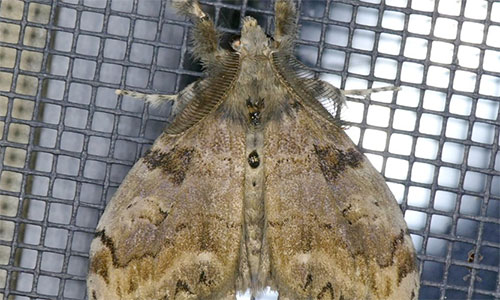
Tussock Moth
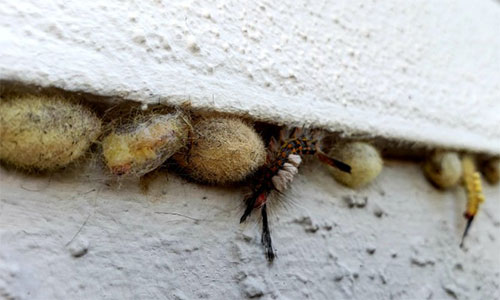
Tussock Moth Cocoons
These caterpillars are voracious feeders, targeting a wide range of trees and shrubs. They are particularly notorious for feeding on hard wood trees including Oaks, Bald Cypress, Willow and Hickory. Mature larvae cease feeding and disperse to seek protected locations to spin their silken, hair covered cocoons. These cocoons are difficult to remove and can be found on houses, boats, picnic tables and other outdoor articles.

Tussock Caterpillar
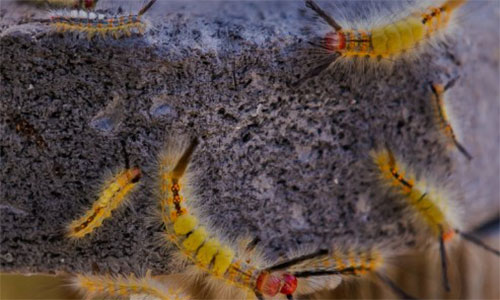
Tussock Caterpillars
Combating the menace of these pests requires a multi-faceted approach that integrates both cultural and chemical control methods. Among the strategies employed are:
- Monitoring and Early Detection: Regular scouting of the landscape for signs of pest activity allows for early intervention, preventing infestations from reaching damaging levels. Early detection enables timely implementation of control measures, increasing their efficacy and reducing the need for extensive intervention.
- Habitat Modification: Altering the landscape to make it less conducive to pest proliferation, which includes removing debris, moving overgrown vegetation and eliminating breeding sites.
- Biological Control: By introducing natural predators, we can target nuisance pest populations and they can aid in their reduction. Biological control agents include predator insects and parasitic wasps.
- Chemical Control: In cases of severe infestations, chemical insecticides may be necessary to manage pest populations effectively. It is important to use these products judiciously and in accordance with label instructions.
In the springtime, Florida's landscapes come alive with vibrancy of new grown and blooming flora. However, within this seasonal splendor the presence of lubber grasshoppers and tussock moths serves as a reminder of the challenges posed by pest infestations. By implementing integrated pest management strategies that prioritize sustainability and environmental stewardship, we can effectively mitigate the impact of these damaging pests.
